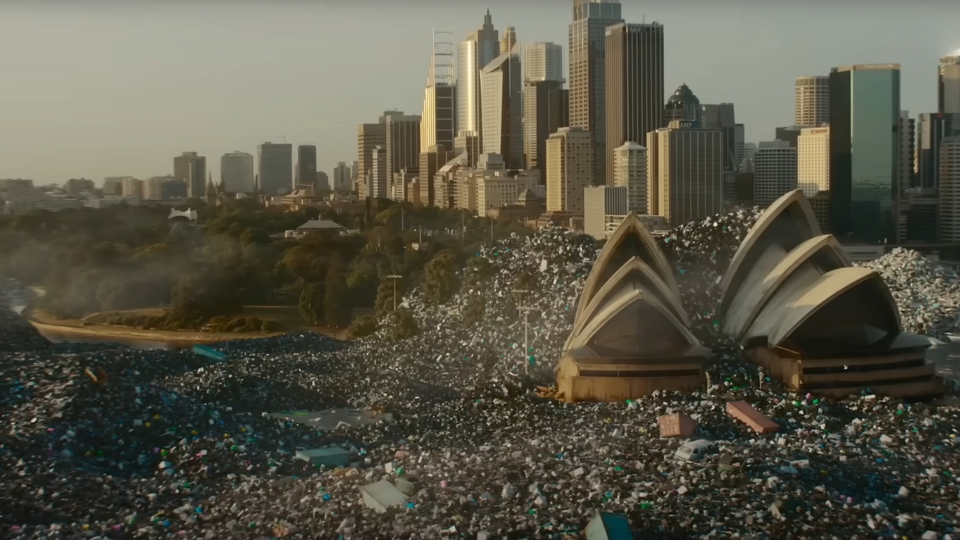

Rethinking a material that has been too good at its job
Expanded Polystyrene (EPS) has been a staple in modern logistics for over seventy years, known for its high-impact strength, lightweight nature, cost-effectiveness, and global availability. EPS plays a vital role in protecting goods in transit to ensure household appliances arrive undamaged.
Over 12 million tonnes of EPS will be produced in 2024 alone, with forecasts indicating 94 million tonnes by 2030. To visualise this immense amount, 94 million tonnes is enough to fill 4,195 Sydney Opera Houses!

EPS: Versatile, Reliable & Efficient (The Good)
EPS excels in packaging, protecting everything from fresh fish and fruits to COVID-19 vaccines and human organ transplants. Its lightweight, shock-resistant and thermal insulation properties ensure that goods remain intact throughout the logistics chain, reducing damage and loss.
For heavy goods like washing machines, refrigerators, and other white goods, EPS provides critical protection. Its high impact strength absorbs shocks and vibrations during transport, ensuring these large, valuable items arrive undamaged and ready for use.
EPS is 98% air, making it lightweight and an excellent insulator. It also reduces energy consumption and CO2 emissions during transport. EPS is also 100% recyclable, easily recognised and sorted, and can be transformed into new products like EPS packaging and building insulation.
The Dark Side of EPS (The Bad)
Despite its effectiveness, EPS poses a significant environmental challenge at the end of its lifecycle. Whilst technically recyclable, its bulky nature makes it very inefficient. EPS can take up 50 times more volume than most materials, posing enormous challenges for waste management. Also, being very lightweight, it readily escapes, breaking into smaller pieces that pollute waterways and oceans, threatening marine life and human health. It's one of the most problematic plastics in society today.
The challenge is even greater in regions with inadequate waste management infrastructure, such as many emerging economies. For instance, when a new washing machine is delivered in developed regions like Australia, the polystyrene packaging is often removed for disposal. While convenient, this service is costly and not feasible everywhere, especially in emerging markets.
The Global Challenge
Global demand for EPS is rising, with production set to increase significantly by 2030. Many regions lack the systems to manage EPS waste, leading to environmental pollution and health risks. Some states and countries are considering bans on EPS due to its environmental impact. Western Australia, for instance, aims to eliminate EPS from the market. However, implementing such bans is difficult without viable alternatives that match EPS's performance and recyclability.
The Need for Alternatives
Businesses face significant risks without suitable EPS replacements. Innovative solutions are being explored, with companies investing in R&D to find eco-friendly alternatives that match EPS's performance. Some are also enhancing their EPS recycling processes to reduce the environmental impact of EPS.
High return rates due to transit damage can lead to significant financial losses. Therefore, companies need a scalable replacement that outperforms EPS and can be easily recycled through standard waste streams.
Systems Change is Coming
While EPS has been a cornerstone of modern packaging and insulation, its environmental impact poses a significant challenge, especially at the end of its lifecycle. With global production rising, developing effective waste management and exploring eco-friendly alternatives is crucial.
We know EPS excels in functionality; however, addressing its environmental impact is critical to aligning with sustainability goals. Through collective effort and innovation, we can transition smoothly and continue to benefit from EPS without harming the environment. It's time for action and collaboration to develop styrofoam alternatives to solve this complex issue. Transitioning from EPS won't be easy, but it's essential for a sustainable future.
Join the EPS Replacement Consortium
At Phantm, tackling complex material challenges is part of our DNA. That's why we've launched the EPS Replacement Consortium. We've gathered a dream team of experts to develop sustainable alternatives to EPS and are thrilled by the early interest from leading national and multinational firms.
Is EPS part of your supply chain? Are you looking for a sustainable alternative? Join us in this unique opportunity to create a lasting legacy for your business and the planet.
Contact Us to find out more.
Join our EPS Replacement Consortium
If you or your business are interested in collaborating with industry leaders & experts to help find a solution.














